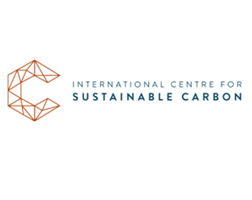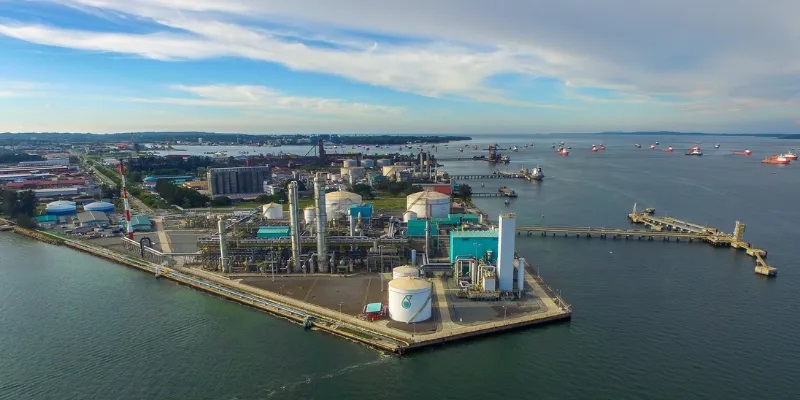
 






.gif)



|
Signature Sponsor


August 17, 2022 - Climate change mitigation and the need to reduce greenhouse gases is an urgent priority. New measures and solutions are needed as governments set emissions reduction targets and corporations introduce sustainability agendas. Increasing the use of low-carbon methanol can be one of a range of climate change mitigation measures.
Methanol is an essential building block of hundreds of products that touch our daily lives, but its emerging use as fuel for cars, trucks, ships, cooking stoves, kilns, boilers, generators and fuel cells will change the energy scene in the short term. It is an attractive option for energy storage, including hydrogen.
Methanol can be produced from any resource which contains carbon that can be converted into synthesis gas. Feedstocks for methanol production include natural gas, coal, naphtha, biomass, various wastes as well as recycled CO2 and hydrogen. Currently, about 65% of global production comes from natural gas, while the remainder is mainly from coal. Only 0.2% comes from renewable sources. Methanol produced from renewable and low-carbon sources can help countries meet their climate change mitigation goals and improve ambient air quality while providing secure, affordable energy.
Many countries aim to be carbon neutral by 2050, 2060 or 2070; this implies that there will be increased demand for renewable transport fuels. If renewable methanol is chosen, strong policies, regulations, and incentives will be needed to support its production.
Conventional methanol production from fossil fuels using syngas is a well-established technology and economically attractive. However, it has relatively high CO2 emissions. On the other hand, the capital costs of producing renewable methanol are higher than for conventional methanol. Making methanol from CO2 and renewable hydrogen is in its relative infancy and the associated costs and risks of scaling up the technology are high. Supportive policies and financial incentives, including tax breaks, will drive the effort to develop these projects. It is expected that by 2050, renewable methanol will achieve cost parity with that made from fossil fuels. Renewable methanol is expected to grow significantly in importance as various industrial-scale projects emerge. Some renewable methanol projects, such as in Rotterdam, the Netherlands and Tarragona, Spain, where municipal waste will be used as feedstock, may effectively have negative costs, as companies will be paid by local councils to remove the waste and convert it into valuable products, including methanol.
China is the dominant producer and consumer of methanol. Most of its methanol (70%) is produced from coal, but projects using different sources such as CO2 and hydrogen are emerging. The country is the fastest-growing market, having demand for every methanol derivative. Demand from the petrochemical sector drives the vast majority of methanol usage and its growth. However, fuel applications are increasing too, driven by strong policies and successful large-scale trials in the automotive sector, making China the leader in methanol for transport. China will remain the world’s largest net importer and a leading force in the global methanol market for the foreseeable future.
Europe imports most of its primary energy sources, including more than half of the methanol required. Europe has a few low-carbon methanol facilities, and dozens of new projects are coming online in the next few years. This makes Europe a world leader in low-carbon methanol production and use. Low-carbon methanol is, and will continue to be, used mainly in transportation, especially in maritime and road transport.
India, using domestic coal and biomass to produce methanol, plans to monetise available resources and increase energy security while providing fuel at an affordable price. Producing methanol in India would also create employment. Additionally, the Indian government sees methanol as a complementary product to hydrogen. So, investments in methanol production, utilisation, and infrastructure are investments made for a future hydrogen economy that should deliver rapid economic returns. Policies that support coal gasification, ultimately with CCUS, and positioning methanol as a hydrogen carrier will help accelerate the energy transition. Government investment in the deployment of relevant technologies and support for greater public-private partnerships should de-risk the investment and promote effective inclusion and participation from the private sector.
In Indonesia there is interest in domestic methanol production from coal, and new projects are emerging, thanks to supportive policies. The country is considered one of the primary markets for biodiesel and has significant production potential in this area.
Japan, due to its limited natural resources, has an interest in making methanol from recycled CO2 and hydrogen. Domestic production of low-carbon methanol would improve Japan’s energy security and help the country achieve carbon neutrality by 2050. Japan’s Carbon Recycling Roadmap includes plans for methanol production from about 2030 onwards.
The global methanol industry has undergone dramatic changes this century as demand has more than doubled from about 50 Mt in 2000 to about 100 Mt in 2020. The changes have included a shift in regional demand, the development of new end uses, and the emergence of new feedstocks and production centres. Demand is expected to increase to 500 Mt by 2050. Currently, there are around 340 methanol plants in operation with a total capacity of nearly 140 Mt/y. In the next 10 years, methanol derived from fossil fuels will remain dominant. Coal as the feedstock will be used in China, India and Indonesia, while alternative feedstocks are considered more attractive in Europe.
To download the full report, click here. |
 











|
